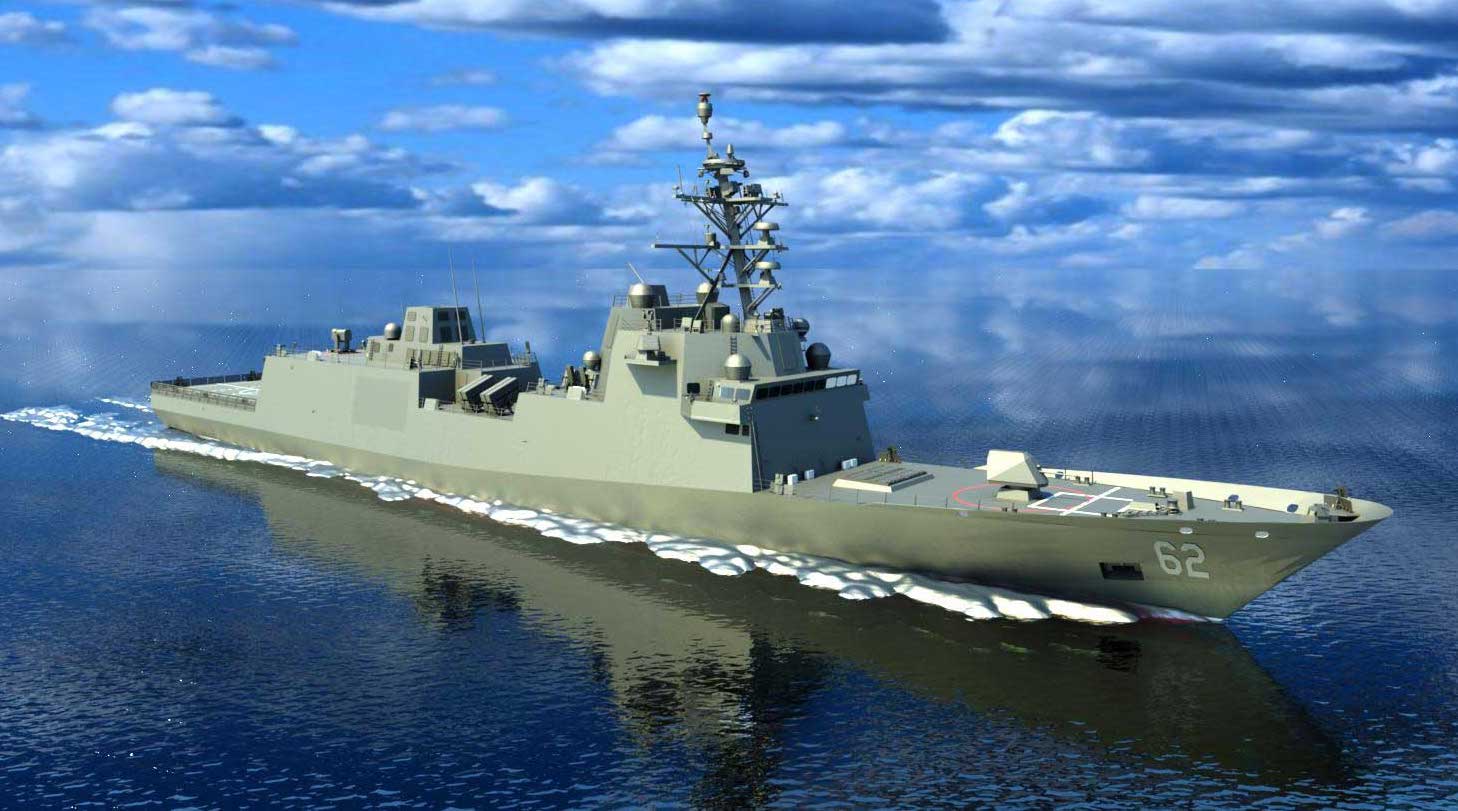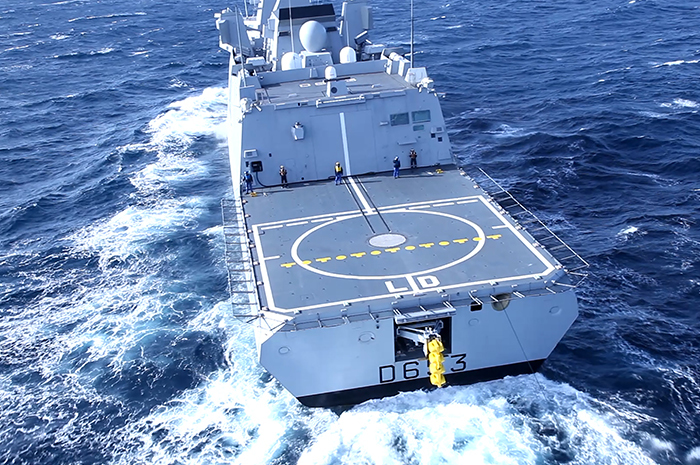
THE PENTAGON – The Navy is dialing back its planned build rate for the Constellation-class guided-missile frigates (FFG-62) following a congressional mandate for the service to reduce risk in the design, according to language in the recently completed Fiscal Year 2022 appropriations bill.
Based on the last complete 30-year shipbuilding plan the Navy issued with the FY 2021 budget request, the service was set to start a two-per-year production schedule in FY 2023 with a second shipyard to build the 7,300-ton frigate based on the FREMM multi-mission frigate in use with the French and Italian navies. Fincantieri Marinette Marine is currently building the Constellation-class in its Wisconsin shipyard.
“While the [frigate] is based on a proven hull design and mature shipboard technologies, it remains a new class and the Navy and the shipbuilding industrial base have had past production challenges in managing costs, technical concurrency, design changes and schedule of lead ships of a class,” reads language from the FY 2022 appropriations law. “There is concern that prematurely adding a second [frigate] shipyard before the first shipyard has identified and corrected technical and production issues will inject unneeded risk and complexity into the program.”
Naval ship designer Gibbs & Cox is reworking the FREMM initial design and is set to complete a critical design review on the frigate later this year before the official start of fabrication.
The FY 2022 law mandates that “prior to award of a contract for second [frigate] shipyard, the agreement directs the Navy to prioritize the following objectives: technology maturation and risk reduction for critical shipboard components; major systems integration; full ship technical data package creation; and successful operationally realistic testing for the first ship. The agreement further directs the Secretary of the Navy to submit a report 90 days prior to awarding a contract for the second [frigate] shipyard to the congressional defense committees outlining the acquisition strategy for achieving the full frigate program of record and meeting these technology maturation and risk reduction objectives.”
The Navy confirmed the service was requesting only one of the Constellation-class frigates this year for $1.2 billion and would have a so-called sawtooth profile for that would build three frigates every two years.
“What you see in the budget request is what one yard can build over the [future years defense plan],” Navy budget chief Rear Adm. John Gumbleton told USNI News.
Over the five-year defense outlook, the Navy intends to buy seven of the FFGs, which are poised to be a major component of the Navy’s future anti-submarine warfare force.

As part of the Fiscal Year 2023 budget request, the Navy announced it plans to scrap the ASW package for the Freedom-class Littoral Combat Ship and shift the effort over to the frigates. After years of testing, the Navy couldn’t successfully incorporate the Raytheon AN/SQS-62 variable depth sonar (VDS) onto the Freedom variant.
“The Freedom-class isn’t well-designed to deploy a VDS off the back of the ship,” Bryan Clark with the Hudson Institute told USNI News on Tuesday.
The Raytheon system was originally slated for LCS and the frigates, but the service has elected instead to use the Thales’ CAPTAS-4, USNI News has reported.
CAPTAS-4 is widely in use by “anti-submarine warfare (ASW) frigates such as the Royal Navy Type 23 and Type 26 frigates, the French Navy FREMM and FDI frigates, the Italian FREMMs, the Spanish F110 frigates, and the Chilean Type 23,” reported Naval News.
The cut of nine Freedom-class LCS and the ASW package is “an opportunity to reinvest $1.8 billion when this ASW mission sets [are] going to be taken up by the frigate, of which we’re buying the fourth of the line in this budget request,” Gumbleton said on Monday.
“It speaks to a return on investment to get at the lethality we need for our near-peer competitor.”





